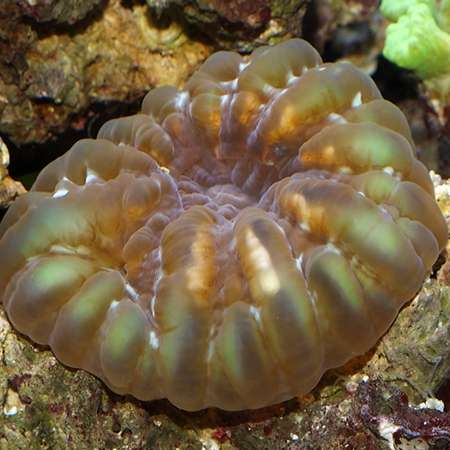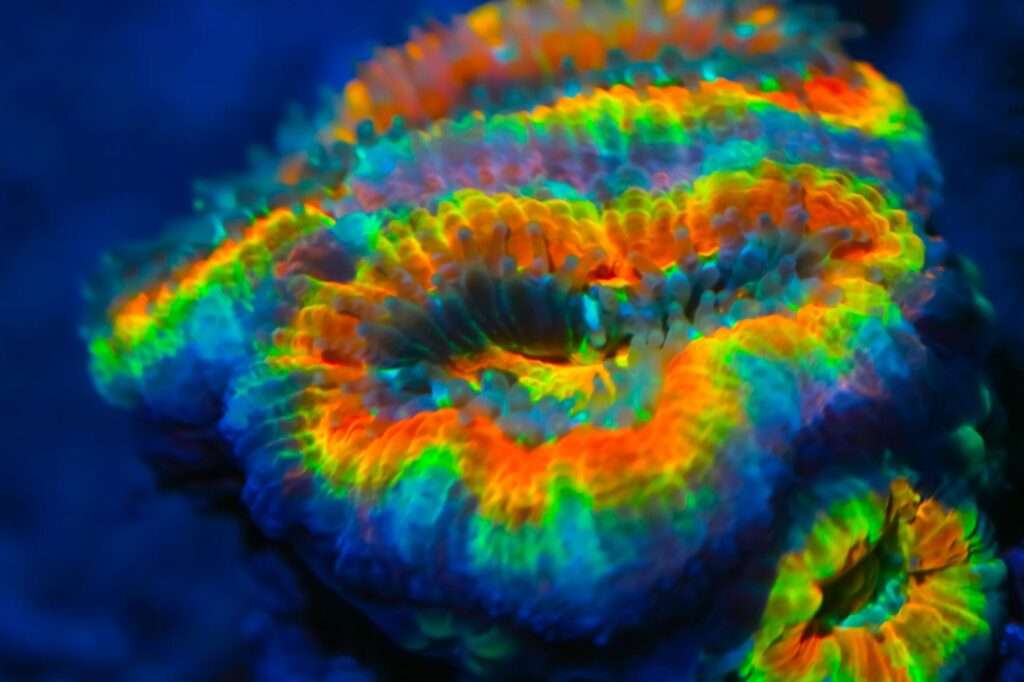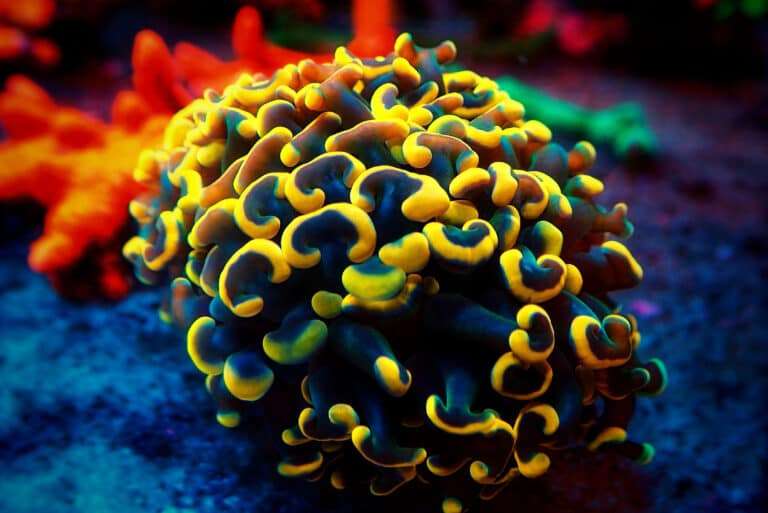
The stunning Cat’s Eye, perhaps the most delicately beautiful coral in the world, is Cynarina lacrymalis. It is the largest single polyp coral known to exist and may either live freely or be anchored to the ground. They either have an oval or spherical form with fleshy, transparent lobes that resemble bubbles. During the day, when the lobes are enlarged, the vast underlying septa can be seen through them. Wonderful color combinations of cynarina corals are available. Bright red, pink, and green shades can coexist with dull browns or delicate pastels in the Cat’s Eye Coral. The centre can be the same color or a different hue. The red variant is where the name “Meat Coral” originates. However, because of the other hues, particularly if the centre is contrasting, the majority are referred to as Cat’s Eye Coral or Doughnut Coral.
Habitat
Bruggemann first described the Cynarina genus in 1877. There are nine nominal species and one or two real species, one of which is native to Australia. Each of these species shares traits with the legitimate species Cynarina lacrymalis. The rocky substrates, overhangs, reef slopes, and occasionally muddy substrates are home to the Cynarina lacrymalis. They have a depth range of 0-131 feet (0-40 m) in a variety of water movement situations. They spread their tentacles at night to feed.
Morphology
One enormous corallite, or polyp, with an oval or round skeletal structure makes up the Cynarina genus. It features several different heights of massive, noticeable septal teeth, the largest of which are substantially thicker. These corals feature a pointed base that allows the polyp to be connected vertically to the desired spot, allowing them to be either free-living or attached. The tallest septa are frequently visible in the translucent skin of the Cynarina, which is typically brown but can also be green, blazing red, pink, and other light pastel colors. The centres may be a different tint of the same color. The color combinations of cat’s eye coral (C. lacrymalis), which can have either the same hue or a distinct color in the centre, are numerous. Their bodies can be up to 6″ in diameter (15 cm).
The Cynarina corals may change the appearance of their surface to one that is shiny or drab in an almost chameleon-like manner. Although the cause of this is uncertain, it has been hypothesized that the ambient tank conditions are to blame. They have the ability to alter shape. During the day, this coral is smooth and bouncy, but at night, it deflates and extends its long tentacles to eat. If the tentacles are disturbed, this nocturnal look, which resembles an anemone, would contract similarly.
In Captivity

- Feeding
The Cynarina genus has evolved a number of feeding techniques. They get some of their nutrients from a marine alga called zooxanthellae through a symbiotic interaction. They can also take in dissolved organic substances and planktonic creatures as well as food particles from the water column.
When given mysis along with bits of fish, shrimp, or other flesh in captivity, C. lacrymalis does exceptionally well. When tentacles are present, feed at night, or provoke hunger with shrimp or fish juice.
- Social Interactions and Compatibility
The C. lacrymalis will tolerate other corals of the same species, but they must be maintained apart. They have nighttime-emerging feeder tentacles. They can sting others, but because of their passive character, it’s more probable that they will be the ones who are overcome.
Toxins from soft corals, such as those found in mushrooms, also have an impact on cynarina corals. They may eventually die in a tank with a lot of soft corals. There is a problem if there is no expansion. Carbon usage could be beneficial.
Table





